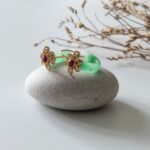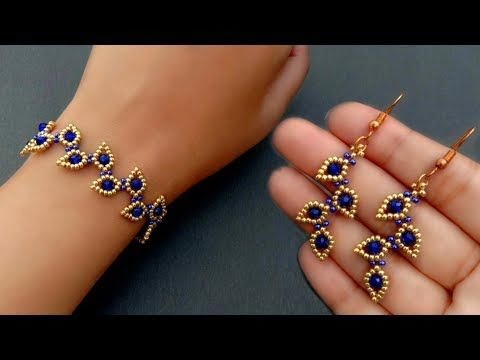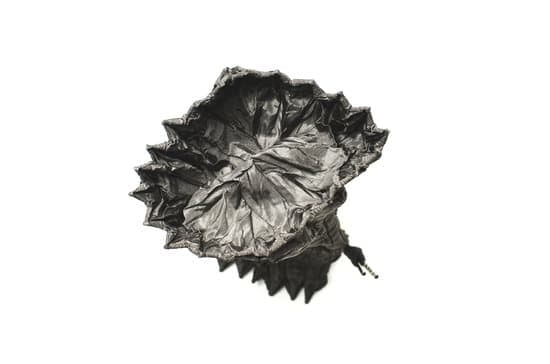In today’s jewelry market, it is crucial for consumers to be able to tell the difference between moissanite and diamond jewelry. This knowledge allows buyers to make informed decisions and prevent overspending on gemstones that may not hold the value they desire. Understanding the importance of differentiating between these two gemstones is key to avoiding disappointment and ensuring satisfaction with your purchase.
When purchasing fine jewelry, particularly engagement rings or other high-value pieces, it is essential to know exactly what you are buying. Many people may be unaware that moissanite, a diamond simulant, exists and bears a striking resemblance to genuine diamonds. While both moissanite and diamond share qualities such as brilliance, sparkle, and clarity, there are key differences in their physical characteristics that can help identify each gemstone.
By familiarizing yourself with the visual inspection techniques discussed in this article, you can learn how to distinguish between moissanite and diamond based on color, shape, transparency, and more. Additionally, conducting a hardness test using the Mohs Scale can provide further confirmation of authenticity. Armed with this knowledge, buyers can confidently navigate the market and ensure they are purchasing genuine diamonds or knowingly selecting moissanite for its unique qualities.
Being able to tell the difference between moissanite and diamond jewelry is not only beneficial when making purchases but also in assessing the value of existing jewelry pieces. Whether you already own jewelry or are considering adding new pieces to your collection, understanding these distinctions empowers you as a consumer. Join us as we explore various methods for telling apart these two popular gemstones.
Visual Inspection
When it comes to differentiating between moissanite and diamond jewelry, a visual inspection plays a crucial role in identifying their distinct physical characteristics. While moissanite bears a striking resemblance to diamonds in terms of brilliance, sparkle, and clarity, there are key differences that can help you accurately identify each gemstone.
Resemblance between Moissanite and Diamonds
Moissanite is known for its exceptional brilliance and fire, which refers to the way light is reflected and dispersed within the stone. When compared side by side, moissanite can sometimes appear even more brilliant than diamonds due to its higher refractive index. Additionally, both moissanite and diamonds possess excellent hardness, making them resistant to scratches.
Color, Shape, and Transparency
One of the easiest ways to distinguish between moissanite and diamond jewelry is by observing their color. While diamonds come in various shades like yellow or blue due to impurities or the presence of other elements, moissanites typically exhibit little to no color, appearing colorless or near-colorless. It’s worth noting that some fancy-colored moissanites do exist but are considerably rarer.
Furthermore, if you closely examine the shape of the stones under a loupe or magnifying glass, you may notice another difference. Moissanites usually have faceting patterns that differ from those found in diamonds because they are grown in labs rather than naturally occurring. Lastly, transparency can also be an indicator as genuine diamonds tend to have better transparency than moissanites.
By carefully considering these visual cues during your inspection process, you’ll be on your way to accurately distinguishing between moissanite and diamond jewelry. However, it’s important to note that visual inspection alone may not provide definitive confirmation but can serve as an initial step for further assessment using other methods discussed in this article.
Hardness Test
The hardness test is an effective method to determine the authenticity of moissanite and diamond jewelry. This test utilizes the Mohs Scale of Hardness, which measures the scratch resistance of various minerals, including gemstones. By comparing the scratch resistance of a stone to known substances on the scale, it becomes possible to identify whether it is moissanite or diamond.
To conduct the hardness test at home, you will need a few common household items: a glass plate, a loose moissanite or diamond stone, and other materials with known hardness ratings from the Mohs Scale. Begin by making sure that both the loose stone and the glass plate are clean and free from any debris.
Next, place the glass plate on a flat surface. With moderate pressure, try scratching the glass surface with your loose stone. If no scratches appear on the glass, then it indicates that your stone has a higher hardness level than glass-thus suggesting that it could be a genuine diamond. However, if scratches do appear on the glass surface, then it suggests that your stone may be moissanite because it has a lower hardness level than diamonds.
If you are unsure about conducting this test yourself or prefer professional assistance, you can consult with jewelers or gemologists who have experience in identifying gemstones through various tests. They have access to specialized tools such as scratch testers, which provide more accurate results. These professionals can help verify whether your jewelry is made of moissanite or diamond with greater certainty.
Applying this knowledge about utilizing the Mohs Scale for a hardness test can empower consumers to make informed decisions when purchasing jewelry and protect themselves from unknowingly overspending on imitations. It is important to note that while this method can be useful in distinguishing between moissanite and diamond jewelry, it should be used in conjunction with other identification techniques for accurate results.
| Substance | Mohs Hardness Scale Rating |
|---|---|
| Moissanite | 9.25 |
| Diamond | 10 |
| Glass (typically used in the test) | 5.5 |
Refractive Index Comparison
When it comes to distinguishing between moissanite and diamond jewelry, analyzing the optical properties of the gemstones can be a crucial factor. One important characteristic to consider is the refractive index, which determines how light is bent as it passes through the gemstone. This can provide valuable insight into differentiating these two gemstones.
Refractive index refers to the speed at which light travels through a material, and it is measured by comparing the speed of light in a vacuum to its speed in that particular material. In terms of moissanite and diamond, each gemstone has its own specific refractive index value that sets them apart.
Moissanite typically has a higher refractive index compared to diamonds. The average refractive index for moissanite falls around 2.65-2.69, while diamonds have an average refractive index of 2.42-2.48. By measuring the refractive index, one can determine if a gemstone is more likely to be moissanite or diamond.
To measure the refractive index of a gemstone, specialized equipment such as a refractometer is usually needed. However, there are also home testing methods available that can give an approximate indication of whether a gemstone may be moissanite or diamond.
One method involves taking a close-up photograph of the stone against a text or printed background with small letters or numbers. If you look carefully at the photo and notice doubled letters or numbers within the stone, it could indicate that you are dealing with moissanite rather than diamond since moissanite has higher dispersion compared to diamonds.
It is important to note that while examining optical properties like refractive index can provide valuable insights into differentiating between moissanite and diamond jewelry, it should be used in conjunction with other tests such as visual inspection and hardness testing for a more accurate identification.
Now that we have discussed analyzing the refractive index as a way to differentiate between moissanite and diamond jewelry, let’s take a look at the weight and size differences between these gemstones in the next section.
| Refractive Index | Gemstone |
|---|---|
| 2.65-2.69 | Moissanite |
| 2.42-2.48 | Diamond |
Weight and Size Differences
When it comes to differentiating between moissanite and diamond jewelry, understanding the variations in weight and size can be crucial. While moissanite may closely resemble diamonds in terms of brilliance and sparkle, there are notable differences when it comes to their physical characteristics. By examining the weight and size of gemstones, buyers can gain valuable insights into their authenticity.
Firstly, it is important to note that both moissanite and diamonds are measured in terms of carat weight. Carat is a unit used to measure the weight of gemstones, with each carat equaling 200 milligrams. However, due to differences in density, a moissanite stone will typically weigh less than a diamond of the same physical size. This means that if you have two stones of identical dimensions, the moissanite will weigh less than the diamond.
Secondly, examining the dimensions or measurements of a gemstone can provide additional clues when trying to differentiate between moissanite and diamonds. Diamonds tend to have standard proportions due to their crystalline structure, resulting in well-defined shapes such as round brilliant or princess cuts.
On the other hand, moissanites can be cut into various shapes with more flexibility since they are lab-grown. Additionally, while both gemstones may exhibit similar visual effects like fire or scintillation, careful observation may reveal subtle differences in how light interacts with each stone due to variations in their shape and faceting patterns.
It is important for buyers to consider these weight and size differences as preliminary indicators when examining jewelry. If you come across significantly lighter gemstones or irregularly shaped diamonds that appear too good to be true based on their price tag or claims of being “natural,” it could raise suspicions about their authenticity. Remember that purchasing from reputable sellers who provide detailed information about the gemstone’s specifications can help ensure transparency and facilitate informed decision making.
Pricing Guide
When it comes to purchasing jewelry, understanding the cost differences between moissanite and diamond is crucial. Pricing can vary significantly, and being able to evaluate these differences allows consumers to make informed decisions and avoid overspending. In this section, we will compare the average prices of moissanite and diamond jewelry, highlighting the significant price disparities and exploring the factors influencing the cost.
Average Prices:
– Moissanite Jewelry:
- On average, moissanite jewelry tends to be significantly more affordable compared to diamond jewelry.
- The cost of moissanite is generally a fraction of the price of diamonds. For example, a one carat moissanite can cost around $400-$600, while a one carat diamond can range from $4,000-$20,000 or more depending on its color, clarity, cut, and other factors.
– Diamond Jewelry:
- Diamonds are typically more expensive due to their scarcity and desirability.
- The price of diamond jewelry can vary greatly depending on factors such as carat weight, cut quality (including facets), color grade (ranging from D – colorless – to Z – yellow/brown), clarity grade (indicating any visible flaws or inclusions), and overall craftsmanship.
Factors Influencing Cost:
Several key factors influence the cost differences between moissanite and diamond jewelry:
- Rarity: Diamonds are inherently rare gemstones compared to moissanite since they are formed deep within the Earth’s crust over millions of years. This rarity contributes to their higher price.
- Production: Moissanites are laboratory-grown gemstones that can be created with relative ease using advanced technology. Diamond production involves complex mining processes that make them more expensive to obtain and refine.
- Market Demand: Traditional preference for diamond jewelry has created a strong market demand, driving up prices. On the other hand, moissanites are gaining popularity as an affordable and ethical alternative to diamonds, resulting in lower market prices.
It is important to note that while moissanite may have a significantly lower price compared to diamonds with similar specifications, it does not compromise on sparkle and brilliance. Therefore, understanding the cost differences between moissanite and diamond jewelry ensures that buyers are getting the best value for their money.
Certification and Documentation
When purchasing high-value gemstones such as moissanite and diamond jewelry, it is crucial to ensure their authenticity. One of the most reliable methods for confirming the genuineness of these gemstones is through certification and documentation. In this section, we will explore the importance of certifications and documents in verifying moissanite and diamond jewelry, discuss reputable certification authorities, and provide tips on what to look for in a valid certificate.
Authenticity certificates serve as official documentation that provides detailed information about the specific characteristics of a gemstone. These certificates are typically issued by reputable gemological laboratories or organizations that specialize in evaluating and grading gemstones. When purchasing moissanite or diamond jewelry, it is essential to obtain an authenticity certificate from a recognized authority.
A valid authenticity certificate contains important details such as the type of gemstone (moissanite or diamond), carat weight, color grade, clarity grade, cut grade (for diamonds), dimensions, and any other relevant information. It serves as proof of the gemstone’s quality and authenticity. By obtaining an authenticity certificate, buyers can have confidence in their purchase and be assured that they are getting exactly what they paid for.
When examining an authenticity certificate for moissanite or diamond jewelry, it is important to look for accreditations from well-known certification authorities such as the Gemological Institute of America (GIA) or International Gemological Institute (IGI). These organizations have rigorous standards for evaluating gemstones and are considered highly reputable within the industry. Additionally, check if the certificate includes security features like holograms or unique serial numbers which help prevent fraud or tampering.
Expert Advice
Consulting an expert gemologist or jewelry professional is a crucial step in verifying the authenticity of moissanite and diamond jewelry. While visual inspections, hardness tests, refractive index comparisons, and weight and size differences can provide some indication, it is always best to seek the opinion of an experienced individual who specializes in gemstones. A trained expert will have the knowledge and equipment necessary to accurately identify and differentiate between moissanite and diamond.
When looking for a gemologist or jewelry professional, it is important to find someone who is accredited and reputable. One way to ensure this is by checking for certifications or memberships with recognized organizations, such as the Gemological Institute of America (GIA) or the American Gem Society (AGS). These institutions are well-known for their high standards in gemstone education and certification.
Before consulting an expert, it can be helpful to prepare questions ahead of time to effectively assess the authenticity of a piece of jewelry. Some questions to consider asking include:
- Can you check if this stone is a diamond or moissanite?
- What testing methods will you use to determine the authenticity?
- What equipment do you have in your facility?
- Are you able to provide a certificate of authentication?
During the consultation, allow the expert ample time and space to conduct their assessment without interruption. It may be necessary for them to remove stones from settings for further examination under specialized tools or equipment.
By seeking expert advice, consumers can gain peace of mind knowing that they have made an informed decision about their jewelry purchase. Consulting with professionals adds an extra layer of confidence when confirming the authenticity of moissanite vs diamond jewelry.
Conclusion
In conclusion, acquiring the ability to tell the difference between moissanite and diamond jewelry is crucial for consumers. By understanding the physical characteristics, conducting hardness tests, comparing refractive indexes, analyzing weight and size differences, evaluating pricing disparities, seeking certifications and documentation, and consulting with professionals, buyers can make informed choices and better value their jewelry.
Armed with this knowledge, consumers can prevent overspending on moissanite when they want a diamond or avoid mistakenly dismissing moissanite as a cheap alternative to diamond.
The key takeaways from this article should be that brilliance, sparkle, and clarity are not enough to confirm the authenticity of a gemstone. Consumers need to pay attention to more subtle differences in color, shape, transparency, refractive indexes, weight, and size.
By having a deeper understanding of these factors and utilizing the tools discussed in this article like the Mohs Scale of Hardness or authenticity certificates from reputable authorities like GIA or AGS (Gemological Institute of America or American Gem Society), consumers can feel confident in their purchases.
Furthermore, not only does differentiating between moissanite and diamond jewelry help consumers make educated decisions but it also allows them to truly value their jewelry. Whether it’s cherishing a high-quality piece for its beauty or regarding it as an investment for the future, understanding what you own adds an extra level of appreciation.
Ultimately, by being empowered with knowledge about distinguishing between moissanite and diamond jewelry, consumers will have the confidence to buy pieces that precisely match their desires while ensuring they receive authentic gemstones worthy of their investment.
Frequently Asked Questions
How can you tell if it’s a diamond or moissanite?
Distinguishing between a diamond and moissanite can be challenging, but several key differences can help determine their identity. One of the most significant factors is the brilliance or sparkle of the gemstone. Diamonds tend to exhibit a unique, intense sparkle, often described as “white light,” while moissanites often showcase a dazzling “rainbow” effect due to their different refractive properties.
Additionally, diamonds are typically known for their exceptional hardness, scoring a 10 on the Mohs scale, whereas moissanite ranks at 9.25. Professional gemologists also use specialized tools such as thermal testers and UV light tests to differentiate between these two gems accurately.
Can anyone tell the difference between moissanite and diamond?
While it may be difficult for an untrained eye to distinguish between a moissanite and a diamond, professionals in the field of gemology can typically tell them apart with proper examination. The distinct optical properties of moissanites, including their higher dispersion (rainbow effect) compared to diamonds, may give away their true nature when scrutinized under certain lighting conditions or using magnification tools.
However, in everyday situations without close scrutiny or comparison with genuine diamonds, many people may not be able to notice any difference and could mistake a high-quality moissanite for a diamond.
Can people tell if you have a moissanite ring?
In general, most people may not easily identify whether someone is wearing a moissanite ring just by looking at it casually. Moissanites closely resemble diamonds in terms of physical appearance unless subjected to careful inspection or testing by professionals who are skilled at distinguishing these gemstones apart using specialized equipment and knowledge.
However, it’s important to note that certain individuals with extensive knowledge or experience in the jewelry industry might be more likely to recognize subtle differences that could indicate whether one is wearing a moissanite over a diamond ring.

Welcome to my jewelry blog! My name is Sarah and I am the owner of this blog.
I love making jewelry and sharing my creations with others.
So whether you’re someone who loves wearing jewelry yourself or simply enjoys learning about it, be sure to check out my blog for insightful posts on everything related to this exciting topic!





